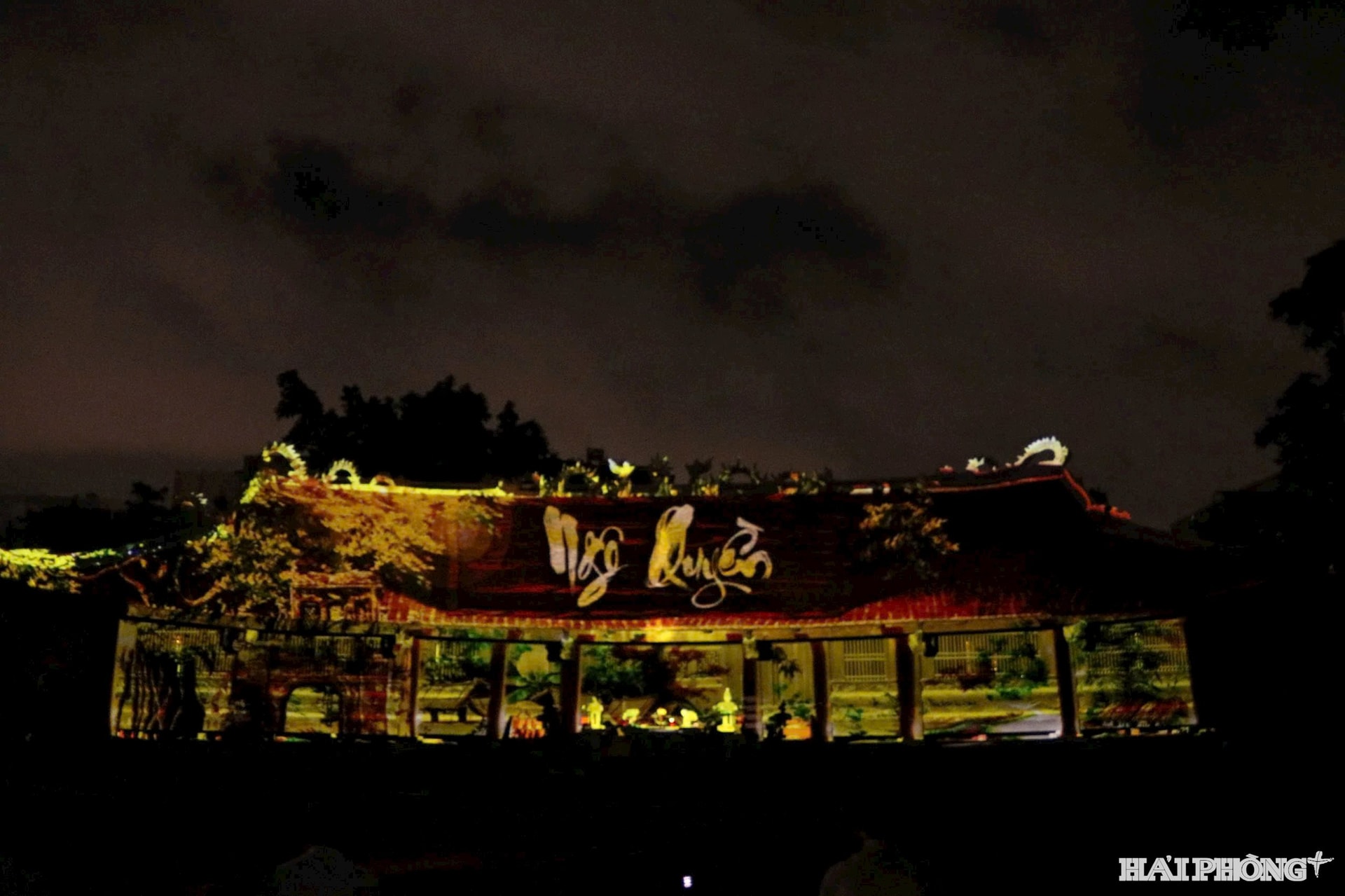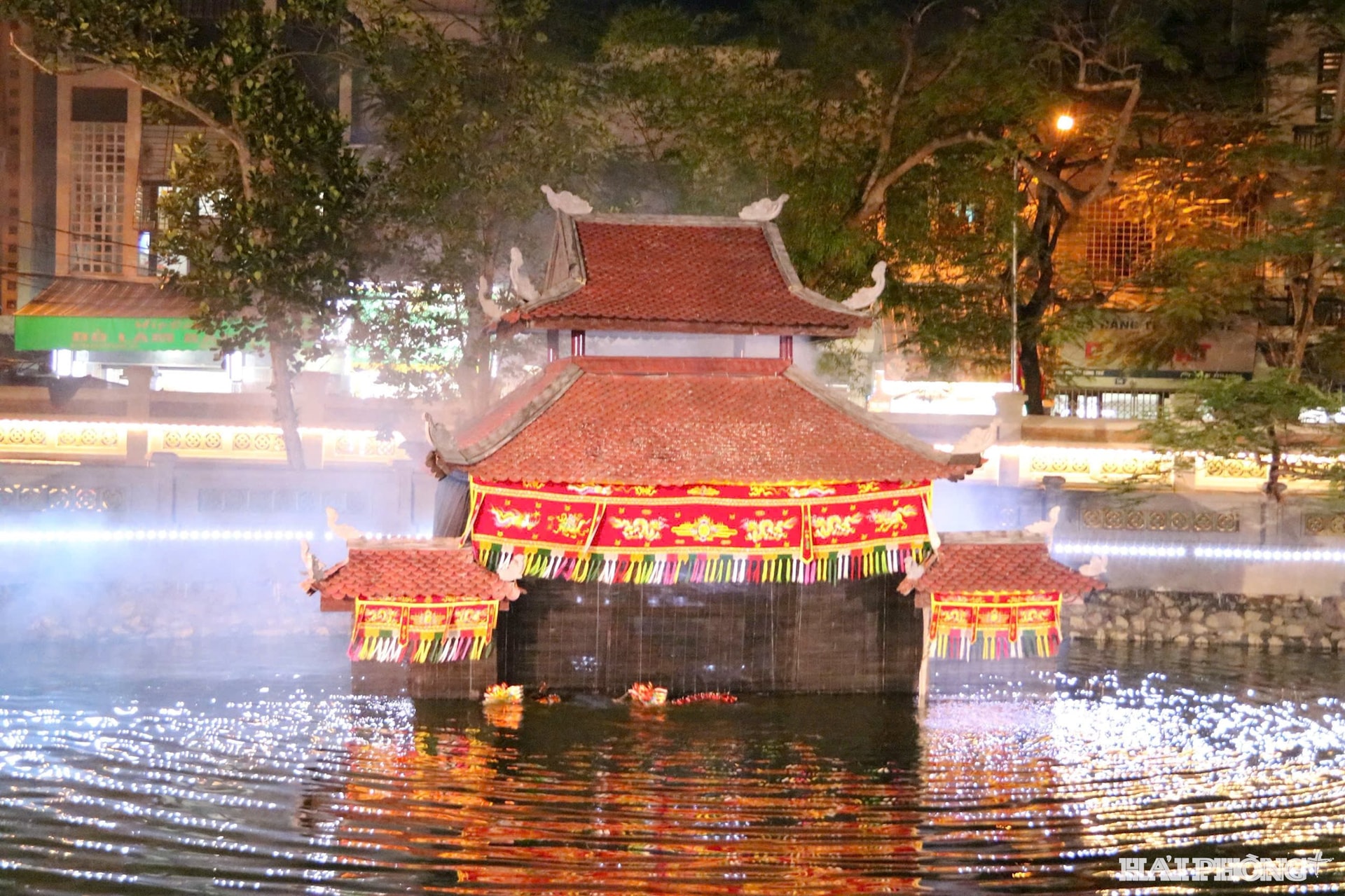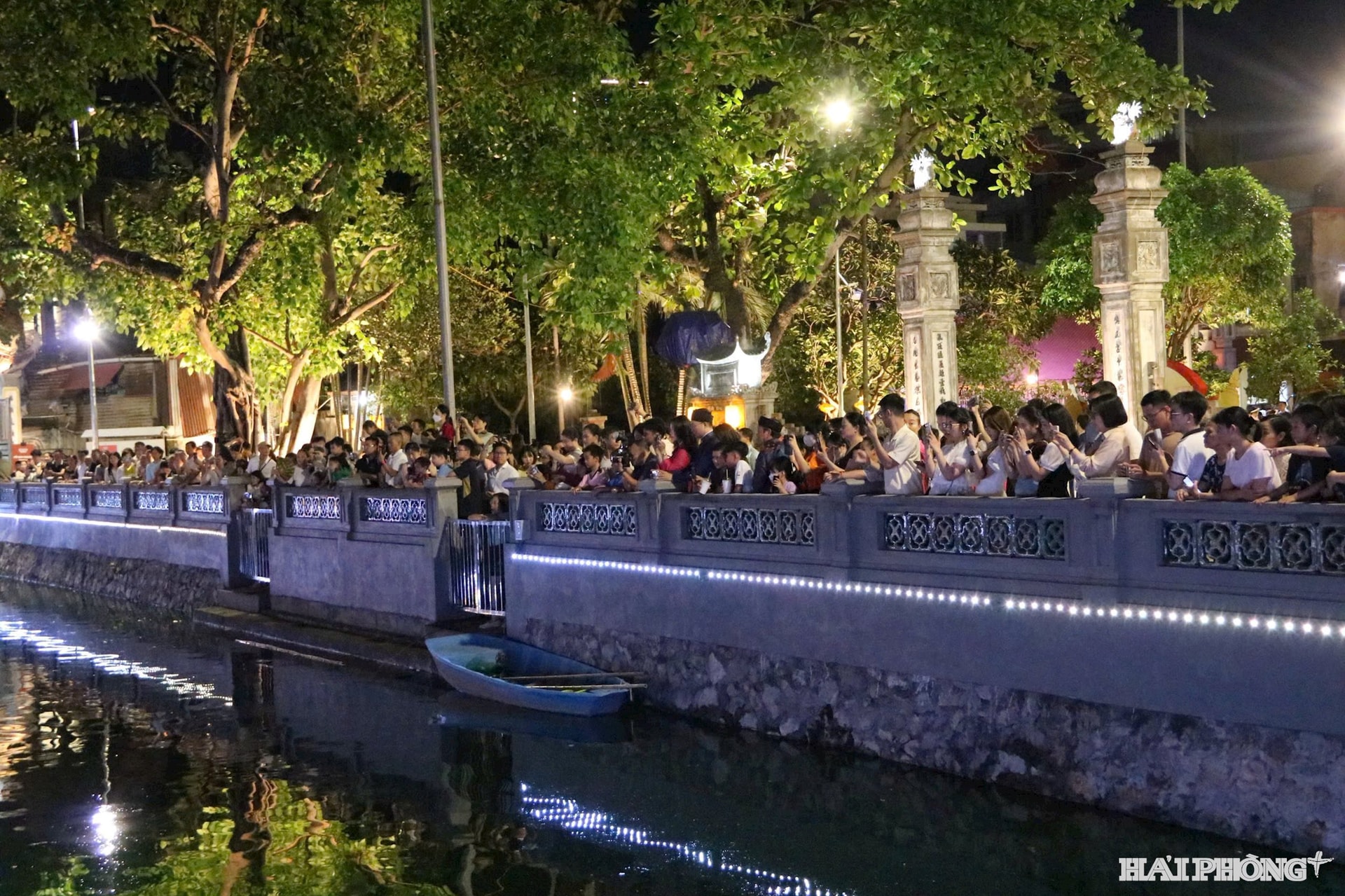Hai Phong’s tourism sector is undergoing a dynamic transformation, gradually asserting its role as a key economic driver for the city.
First digital tourism product launched
Last weekend, Tran Phuong Thao from Cau Giay ward, Ha Noi, visited Hai Phong with her friends. Excited to experience the city’s first digital tourism product - the nighttime tour “Sacred Traces of Hang Kenh,” Thao insisted they give it a try.
Living up to the hype, the 3D mapping show “Bach Dang Waves and Ngo Quyen’s Spirit”, part of the tour, proved to be a delightful surprise for visitors.

“The combination of light, sound, and moving imagery projected onto the ancient communal house created a vivid, lifelike atmosphere full of emotion,” said Thao.
As part of the tour, visitors also enjoy traditional art performances, local cuisine, and cultural experiences such as practicing calligraphy, printing folk paintings, and shopping for handicrafts.

Launched by the Hai Phong Department of Culture, Sports and Tourism on June 28, the “Sacred Traces of Hang Kenh” night tour has since attracted crowds of visitors from near and far.
This product marks the beginning of efforts to tap into the vibrant historical and cultural values of Hai Phong’s relics and destinations through nighttime tourism. It is a strategic step toward developing a nighttime economy, in line with directions of the city Party Committee and People’s Committee on developing the city’s available and promising economic models.

New local specialties enrich culinary map
Following the merger with Hai Duong province, Hai Phong’s culinary landscape has expanded with many new specialties, offering more options for visitors.
Previously, Hai Phong’s food tours had already made waves on social media, especially among young travelers, with local favorites such as banh da cua (crab noodle soup), nem cua be (crab spring rolls), assorted snails and seafood dishes, bun ca cay (spicy fish noodle soup), pâté baguettes, and che dua dam (coconut jelly dessert). Now, additional specialties such as ruoi (ragworm) dishes, lychee, mung bean cakes, and banh gai (ramie cake) from the western part of the city have joined the list.
.jpg)
During the recent lychee season, Nguyen Hong Minh from An Thi commune, Hung Yen province took a tour to Dong Man ecological area in Thanh Ha commune and stopped by Tuan Ruoi Restaurant on Truong Han Sieu street to enjoy a variety of ragworm dishes. “My family loves ragworm, but having it right at its place of origin made it taste even more delicious and interesting,” she said.
In addition to ragworm, other new specialties like mung bean cakes, banh gai, and lychee are now widely available at trade fairs, highway rest stops along the Ha Noi–Hai Phong expressway, supermarkets, and upscale restaurants, leaving a strong impression on visitors.

On the national tourism map, Hai Phong boasts exceptional tourism and service potential with Cat Ba Archipelago, a UNESCO World Biosphere Reserve, being the only destination in Vietnam to hold seven national and international titles: scenic landscape, special national relic, world biosphere reserve, national park, marine protected area, member of the World’s Most Beautiful Bays Club, and World Natural Heritage site (together with Ha Long Bay in Quang Ninh).
Hai Phong has also gained recognition for newly designated world cultural heritage sites, including Con Son pagoda, Kiep Bac temple, Thanh Mai pagoda, Kinh Chu cave, and Nham Duong pagoda, opening up vast potential for the development of marine, cultural, and high-end resort tourism, contributing to Hai Phong’s vision as a livable, desirable destination.
LE HUONG